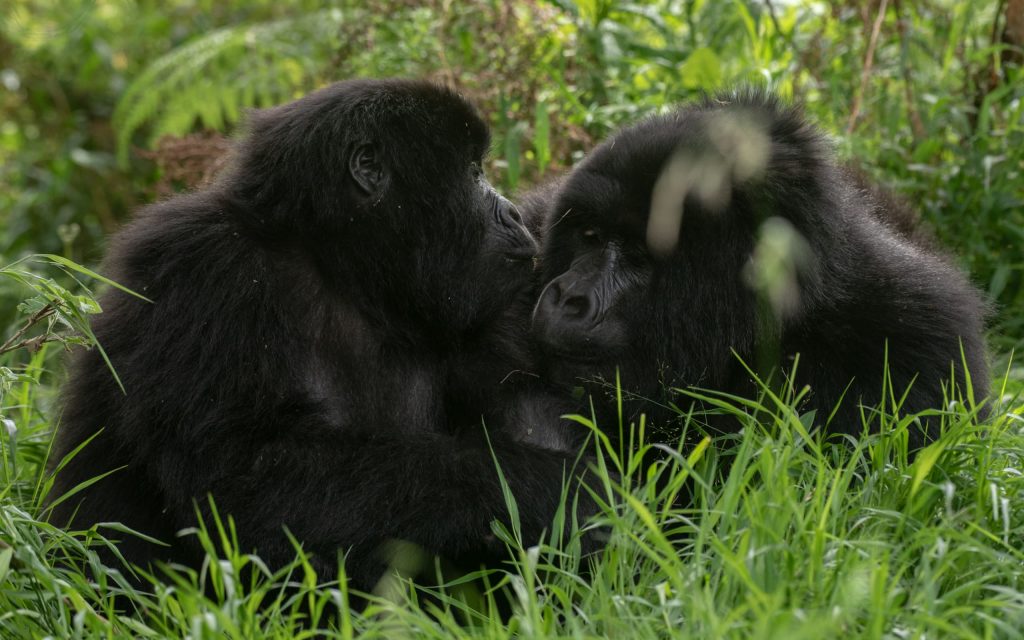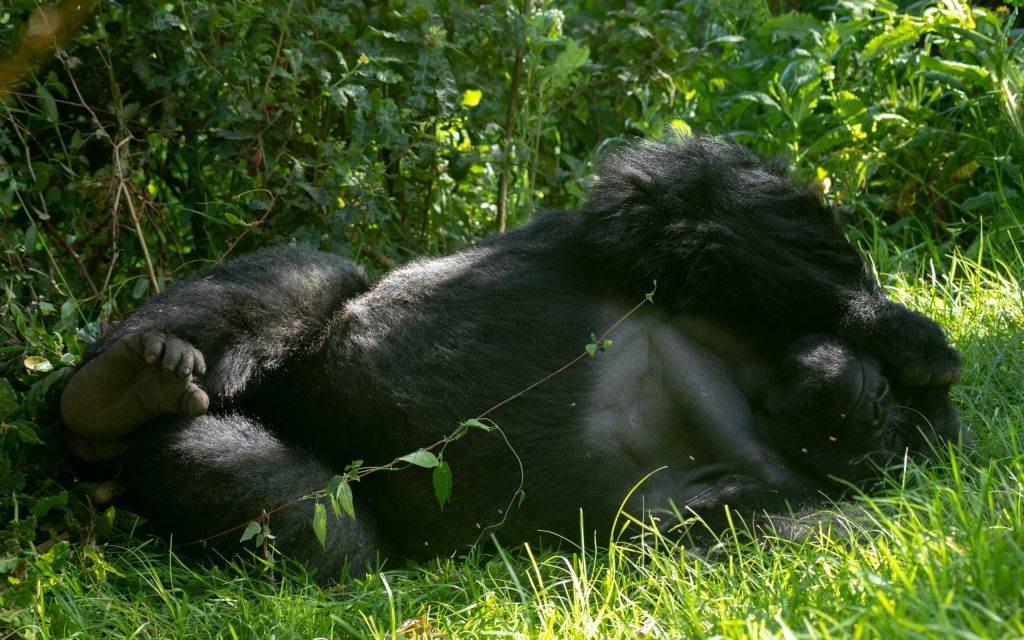Bwindi Impenetrable National Park
- Home
- Bwindi Impenetrable National Park
Bwindi Impenetrable National Park


Immensely gifted by nature, Uganda has ten gazetted national parks; however, of the ten, Bwindi Impenetrable National Park is an excellent UNESCO heritage site, which offers one of the most exceptionally intimate African tropical experiences on the continent.
This Impenetrable National Park which is located in the Southwestern region of Uganda, on the border with Democratic Republic of Congo “is one of the largest areas in East Africa which still has an afro-montane lowland forest extending well into the montane forest belt”, according to UNESCO. The park was gazetted as a reserve in 1932 and later upgraded to a national park in 1992, in order to enhance its protection as a hot bed of biodiversity. In 1991 an additional 4.2 sq. miles of land were bought by the government and added to the park. It currently covers the districts of Kabale, Kisoro and Kanungu.
The largely pristine and undisturbed 32,092 ha, of lowland and montane forest has a rich biodiversity, which comprises 400 gorillas, more than half of the entire worldpopulation of the endangered mountain gorilla. It has at least 400 varied plant species, 346 bird species and 324 tree species, 10 of which are found nowhere else in Uganda but in this forest.
The park is also home to 120 mammals like the chimpanzees, baboons, the forest elephant and antelopes.
Owing to its rich biodiversity, Bwindi is the most visited national park specifically for its gorilla trekking experience.
How important is Bwindi impenetrable national park?
This UNESCO World heritage site is most important for its conservation of the critically endangered mountain gorilla. These apes survive high up in the mountains between an elevation of 8,000 to 13,000 feet. The evergreen montane forest is host to over 500 gorillas living through their realm of over 400 tree species many of which are food for the apes. Additionally, the park’s trees offer a diverse habitat that attracts some of the rarest bird species like the Turner’s Eremomela, chapin’s fly catcher, Shelly’s crimson wing and the African broadbill.
The forest is also home to 202 butterfly species such as the African giant swallow tail and the cream banded swallow tail. As such the forest plays a critical role in conservation of some of the most endangered and rarest species of both flora and fauna, without which, their extinction would be eminent.
Uniqueness and attractions of Bwindi Impenetrable Forest National Park.
The unique attraction about this forest is the presence of gentle and endangered mountain gorillas, whose total population in the park close to four individuals scattered in four sectors of the park where visitors can experience an hour-long stay in the realm of the apes. While those who seek a greater satisfaction in understanding the apes can opt for habituation experience.
The park’s four sectors are, Nkuringo in the south of the park, which is host to four gorilla families. Buhoma sector, in the north of the park with 5 gorilla families, Rushaga sector in the southeast with six families and Ruhija family sector in the east with 4 families.
Nkuringo and Rushaga sectors have a group each under habituation experience, in which the tourists can take part. Gorilla habituation experience costs USD 1,500 the same amount as an hour’s gorilla trek in Rwanda.
The Afromontane low land forest is believed to be a remnant of an extremely largeancient forest that cuts across much of western Uganda, Rwanda and Burundi, to the Eastern Democratic Republic of Congo.
How to get to Bwindi Impenetrable National Park?
Bwindi Impenetrable national park which is found in the southwestern Uganda, is a haven to natural beauty and rich biodiversity. The UNESCO world heritage site is only accessible on foot once at the entrance.
However, by road, Bwindi is at most 7-8 hours from Kampala through Mbarara to Kabale route. It is then 2 hours from Kabale town to the Buhoma entrance. Therefore, one’s journey plan should include a day of travel such that the excursion can begin early next morning before one can embark on a return journey to Kampala or travel towards Queen Elizabeth National Park which is at least two hours away. Queen Elizabeth National Park fully compliments the Bwindi excursion to offer a full Uganda wildlife tour.
By air, Bwindi is served by three airfields strategically located to ease access to all sectors of the park. One can charter a flight from Entebbe international airport or Kajjansi airfield to either Kihiihi and Kayonza airfields to access the northern sectors of the park or to Nyakabande in Kisoro, to access the southern sectors of the park. However, flights to Kisoro are strictly taken in the morning hours by 0700 hours, subject to weather conditions and arrival is at 0810 hours.
When to visit Bwindi Impenetrable National Park?
Depending on what it is that you want to see, Bwindi Impenetrable National Park is welcome to visitors throughout the year even when seasons differ and offer different experiences.
Gorilla trekking is best undertaken during drier seasons of the year between June and September or December to February, as the forest trails are less slippery and skies are unobscured by dark clouds. The dry season is a peak period when the park experiences an invasion of tourists leading to a hike in general service prices; however, gorilla trekking permit prices are consistent throughout the year.
The wet seasons of March to May and October, November are off-peak seasons but best for bird watching as many migratory birds arrive in the park during these seasons. There are many services offered at a discount while the trails are quieter, more intimate and personal due to fewer tourists.
